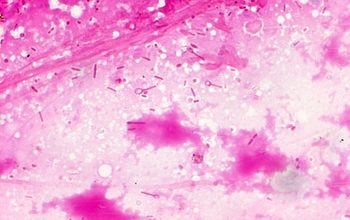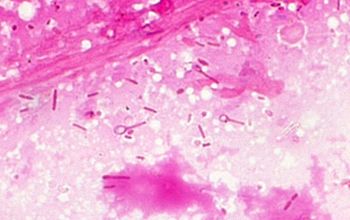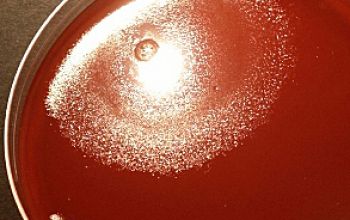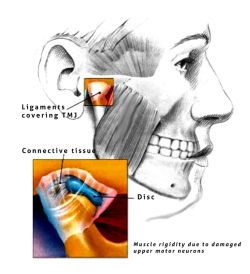This neonate is displaying a bodily rigidity produced by Clostridium tetani exotoxin, called “neonatal tetanus”. Neonatal tetanus occurs in infants born without protective passive immunity, because the mother is not immune. It usually occurs through infection of the unhealed umbilical stump, particularly when the stump is cut with an unsterile instrument.
source CDC
https://commons.wikimedia.org/wiki/File:Neonatal_tetanus_6374.jpg
Sir Charles Bell's portrait of a soldier dying of tetanus. The characteristic rigidity of the body is referred to as opisthotonos and risus sardonicus.
Original in the Royal College of Surgeons of Edinburgh, Scotland.
http://textbookofbacteriology.net/clostridia_3.html
Lockjaw symptoms are caused due to Clostridium tetani infection. Damaged upper motor neurons cause muscular rigidity leading to Lock-jaw.
Author paul
http://www.lockjawsymptoms.net/
Clostridium tetani
-
General information
Taxonomy
Family: Clostridiaceae
Natural habitats
C. tetani and his spores can be isolated from a variety of sources, including soil and the intestinal contents of numerous animal species.
Clinical significance.
Tetanus, caused by C. tetani, is often associated with puncture wounds that do not appear to be infected.
A potent neurotoxin, often referred to as tetanospasmin, is elaborated at the site of trauma and rapidly binds to neural tissue, provoking a characteristic paralysis and tonic spasms.
Tetanus,
also known as lockjaw, is an infection characterized by muscle spasms.
In the most common type the spasms begin in the jaw and then progress to the rest of the body.
These spasms usually last a few minutes each time and occur frequently for three to four weeks.
Other symptoms may include: fever, headache, trouble swallowing, high blood pressure, and a fast heart rate.
Onset of symptoms is typically three to twenty one days following infection. It may take months to recover.
About 10% of those infected die.
-
Diseases
-
Gram stain
Gram positive (become Gram negative after 24 h incubation) straight rods,
drumstick shaped
0.5-1.7 x 2.1-18.1 µm,
occurring singly or in pairs
Spores round / terminal
Swelling of the cell positive
-
Culture characteristics
-
Obligate anaerobic
BBAØ: colonies are 4-6 mm in diameter, flat, translucent, gray, with a matt surface, irregular and rhizoid margins and usually cause
a narrow zone of beta-hemolysis.
There is a tendency to swarm, a thin film of growth over entire agar plate, that is more marked on moist plates.
-
-
Characteristics
-
References
James Versalovic et al.(2011) Manual of Clinical Microbiology 10th Edition
Karen C. Carrol et al (2019) Manual of Clinical Microbiology, 12th Edition
BA: Clostridium tetani https://www.chegg.com/homework-help/questions-and-answers/present-case-study-clostridium-tetani-specifics-include-patient-history-lab-media-identifi-q90109865









